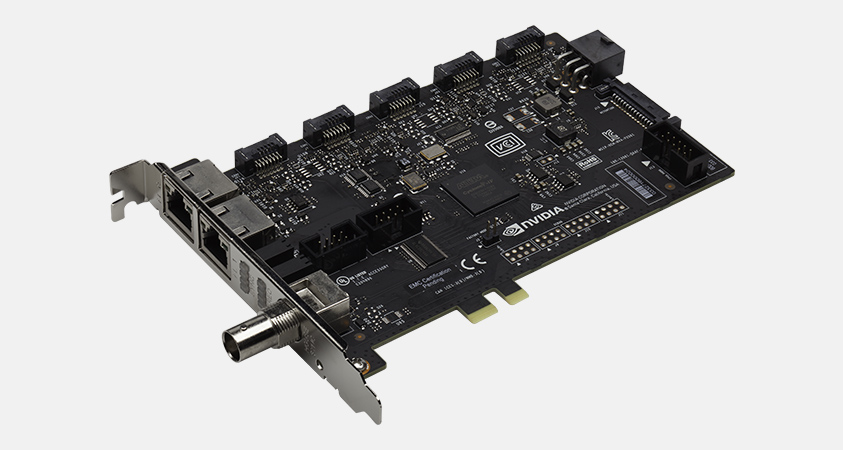NVIDIA Quadro Sync: What Is It and Who’s It For?
Published: 05-08-2024
NVIDIA Quadro Sync is a technology designed for professionals who require exact synchronization across multiple displays or projectors. Whether it's in a studio, a lab, or on a stage, Quadro Sync ensures that all connected displays work together seamlessly, without any visual hitches that can distract viewers or misrepresent data. This technology is particularly valuable in environments where a split-second mismatch can mean the difference between success and failure.

Image Credit: Nvidia
What Makes Quadro Sync Stand Out?
Imagine if you will have a canvas of up to 32 displays all precisely controlled so that they act as one device. This requires an enormous amount of processing power and complex coordination between GPUs, which is why Quadro Sync is such a special technology.
How Does Quadro Sync Work?

Image Credit: Nvidia
Quadro Sync needs a dedicated controller card that allows up to four GPUs to be connected to it. These GPUs, in turn, support the connection of multiple displays. You can have two sync cards in a system, which means up to eight GPUs synced at most. If you do the math and multiply eight by the four displays each GPU supports, then you get the final total of maximum 32 displays.
These can be any type of display, which includes projectors. Even better, Quadro supports projector overlaying, also known as “edge blending” which allows you to build one enormous display out of multiple projectors.
Which Cards Can Use Quadro Sync?
Quadro Sync is supported by most fairly recent GPUs from NVIDIA, including RTX 4000, 4500, 5000 and 6000 Ada generation models. The RTX A-series are also supported, as is the Quadro RX 4000 to 8000 series.
Of course, it’s always a good idea to check if a card supports Quadro Sync before you buy it, if you want to use this feature.
Awesome Use Cases for Quadro Sync
The sky’s the limit when it comes to the different uses people have thought up for Quadro Sync. That being said, there are a few that probably make up the majority of actual implementations in the field:
Background video walls used by news and other information programs.
Extremely high-resolution visualizations of complex scientific data and models.
Art installations, especially now that we have AI-generated algorithmic art that moves.
Automotive designs and simulations.
Large stereoscopic displays.
Control rooms (think NASA or nuclear power plants).
FinTech and traditional trading room floors.
Sports and entertainment.
Augmented reality using massive projection-mapped images.
That’s likely only scratching the surface, but there’s a good chance that you’ve already thought of something in your own professional context that could benefit from a large (or small) Quadro Sync array.
So if you think this technology could be for you, bet in touch with us today to discuss a custom Quadro Sync build that could provide the visual solution you need.